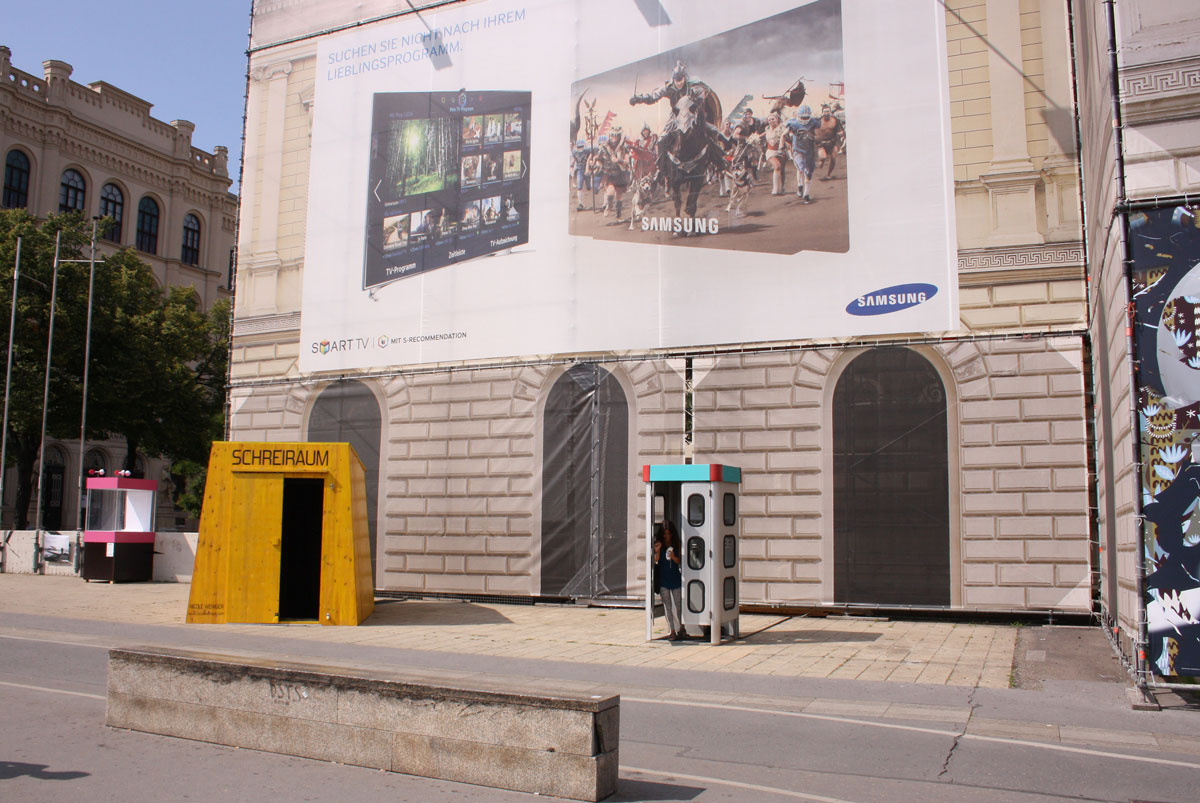Intervention. Seestadt Aspern and Karlsplatz Vienna. 2017
Who will be the future inhabitants of Seestadt Aspern, one of Vienna’s largest urban development projects? How will the future “Seestadt Aspern” deal with alternative forms of living? How will they deal with marginal groups such as the “Wagenplatzkultur”, a form of living where people have decided to live in their caravans instead of owning a piece of land, house or flat.
Seestadt Aspern is an ambitious social housing project built in the outskirts of Vienna. After a first visit to the site during construction the contrast of the advertised future inhabitants, shown on posters and the actual and current population of the place was striking.
So, who will be the future inhabitants of Seestadt Aspern?
Using the example of Karlsplatz (a central square in Vienna) we have seen how city- development deals with unwanted forms of living: There is no more space for drug addicts, or beggars after the “revitalization” of the area.
Will the same happen to the Wagenplatzkultur, although the „aspern Citylab Report“ (Heft Issue 124) claims there is space for Wagenplatzkultur, showing an image of Wagenplatz in the middle of the new city? The article says further: „The city has to offer flexible usage and living possibilities for all kind of people“ (p.27).
My work “Karlsplatz Gänseblümchen” stands for a dialog between these two realities. It should create a connection between the city center and the periphery, between potential owners or investors and the inhabitants of the trailer park who will most likely have to move out of the way. No matter which number you dial the only working connection is Karlsplatz (city center) to Wagenplatz Gänseblümchen (social periphery).
Intervention. Seestadt Aspern and Karlsplatz Vienna.





